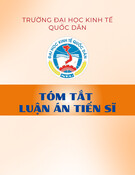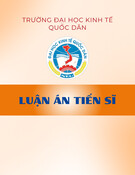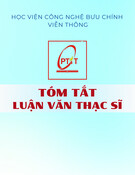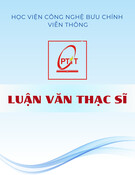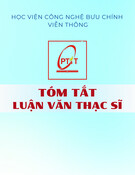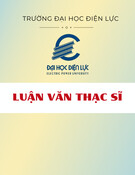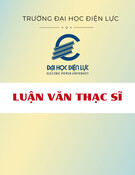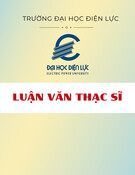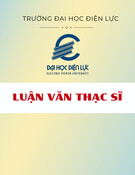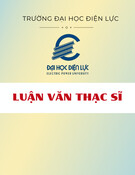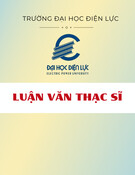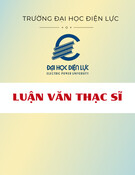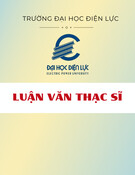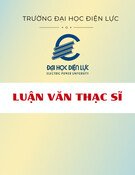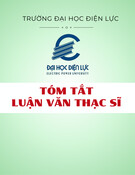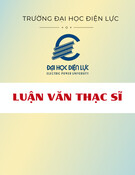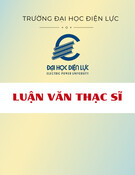
A Comprehensive Study on the Performance of
Hong Kong Mandatory Provident Funds (MPF)
A thesis submitted in fulfillment of the requirements for
the degree of
DOCTOR OF PHILOSOPHY IN ECONOMICS AND FINANCE
Patrick Kuok-kun Chu
B.B.A., M.B.A.
School of Economics, Finance, and Marketing
RMIT Business
RMIT UNIVERSITY
December 2006

i
DECLARATION
I certify that except where due acknowledgement has been made, the work is that of the
author alone; the work has not been submitted previously, in whole or in part, to qualify
for any other academic award; the content of the thesis is the result of work which has
been carried out since the official commencement date of the approved research program;
and, any editorial work, paid or unpaid, carried out by a third party is acknowledged.
Patrick Chu Kuok-kun
12 December 2006

ii
ACKNOWLEDGEMENTS
The author is appreciative and thankful to Professor Michael McKenzie for his guidance,
patience, and support throughout the preparation of this dissertation. The author also
benefited very much from the Research Development Unit and School of Economics,
Finance and Marketing of RMIT for giving lenient help during the candidature; the
Lipper Asia Limited for providing time series data; and the library of University of
Macau and the library of the University of Hong Kong for facilitating the current research
with materials and other means.
Finally, the author owes special gratitude to Miss Irene Cheong, Pastor and the Christians
in Macau GIG-Life Church. Their sacrifice, patience, and support have made the process
of writing the dissertation much easier than it would have been otherwise.

iii
ABSTRACT
This thesis represents the first comprehensive study on the performance (raw and risk-
adjusted), performance persistence, and market timing ability of the equity funds in Hong
Kong Mandatory Provident Funds (MPF) scheme during the period 2001 – 2004.
Regardless of the measure used (Jensen single-index alpha measure, Fama-French three-
factor alpha measure, and modified Jensen alpha controlled by changes in exchange
rates), US equity funds and Pacific-Basin excluding Japan equity funds, are found to
consistently underperform relative to the market. The tracking errors indicate the HSI
tracking funds may not exactly replicate the returns of the benchmark index and they
exhibit March seasonal effect. Nonparametric two-way contingency table and parametric
OLS regression analysis are employed to evaluate performance persistence. The
evidence suggests that the raw returns, Jensen alpha, Fama-French alpha, and their
rankings in the previous year possess predictive abilities. When the funds are classified
into high-volatility and low-volatility samples, the high-volatility funds are found to
possess stronger performance persistence. Neither hot-hand nor cold-hand phenomena
are found in the equity funds managed by the same investment manager. The market
timing models, Treynor-Mazuy and Henriksson-Merton, provide evidence of market
timing ability. The ability of MPF constituent equity funds to successfully time the
market in times of changing economic condition is also investigated. The evidence is
consistent with previous studies which suggest that the conditional models increase the
individual fund traditional alpha measure. Regarding the fund managers’ market timing
ability, the proportion of MPF funds with negative timing coefficients is higher when
conditioned on public information. Finally, the market timing models with the addition
of higher-order terms are found more appropriate.

iv
TABLE OF CONTENT
DECLARATION .....................................................................................................................................I
ACKNOWLEDGEMENT..................................................................................................................... II
ABSTRACT..........................................................................................................................................III
TABLE OF CONTENT........................................................................................................................IV
LIST OF TABLES................................................................................................................................. V
LIST OF FIGURES............................................................................................................................ VII
CHAPTER 1 INTRODUCTION....................................................................................................... 1
1.1 INTRODUCTION OF FUND INVESTMENT IN HONG KONG............................................................. 1
1.2 OVERVIEW OF MANDATORY PROVIDENT FUNDS IN HONG KONG .............................................. 2
1.3 RESEARCH MOTIVES ............................................................................................................... 5
1.4 RESEARCH OBJECTIVES........................................................................................................... 7
1.5 SCOPE OF THE STUDY .............................................................................................................. 7
1.6 LIMITATIONS OF THE STUDY.................................................................................................... 7
1.7 ORGANIZATION OF THE THESIS ................................................................................................ 8
CHAPTER 2 LITERATURE REVIEW ........................................................................................... 9
2.1 ASSET PRICING MODELS .......................................................................................................... 9
2.2 FUND PERFORMANCE ............................................................................................................ 20
2.3 SURVIVORSHIP BIAS .............................................................................................................. 31
2.4 RETURN PERSISTENCE ........................................................................................................... 38
2.5 MARKET TIMING ABILITY ...................................................................................................... 55
CHAPTER 3 PERFORMANCE OF MPF EQUITY FUNDS ........................................................ 72
3.1 INTRODUCTION ..................................................................................................................... 72
3.2 RESEARCH METHODOLOGIES ................................................................................................. 73
3.3 DATA ................................................................................................................................... 83
3.4 EMPIRICAL RESULTS.............................................................................................................. 87
3.5 CONCLUSIONS....................................................................................................................... 97
CHAPTER 4 PERFORMANCE PERSISTENCE OF MPF EQUITY FUNDS ........................... 100
4.1 INTRODUCTION ................................................................................................................... 100
4.2 RESEARCH METHODOLOGY.................................................................................................. 102
4.3 DATA ................................................................................................................................. 108
4.4 EMPIRICAL RESULTS OF PERFORMANCE PERSISTENCE ........................................................... 108
4.5 FURTHER ANALYSIS OF PERFORMANCE PERSISTENCE ............................................................ 113
4.6 CONCLUSIONS..................................................................................................................... 120
CHAPTER 5 MARKET TIMING OF MPF EQUITY FUNDS.................................................... 123
5.1 INTRODUCTION ................................................................................................................... 123
5.2 RESEARCH METHODOLOGY: IDENTIFICATION OF MARKET TIMING OF EQUITY FUNDS .............. 124
5.3 DATA ................................................................................................................................. 131
5.4 EMPIRICAL RESULTS: IDENTIFICATION OF MARKET TIMING OF EQUITY FUNDS........................ 132
5.5 CONCLUSIONS..................................................................................................................... 138
CHAPTER 6 CONCLUSION AND IMPLICATIONS................................................................. 140
6.1 CONCLUDING REMARKS ...................................................................................................... 140
6.2 DIRECTIONS FOR FUTURE RESEARCHES ................................................................................ 142
APPENDIX A: TABLES.................................................................................................................... 145
APPENDIX B: FIGURES .................................................................................................................. 213
BIBLIOGRAPHY............................................................................................................................... 215

